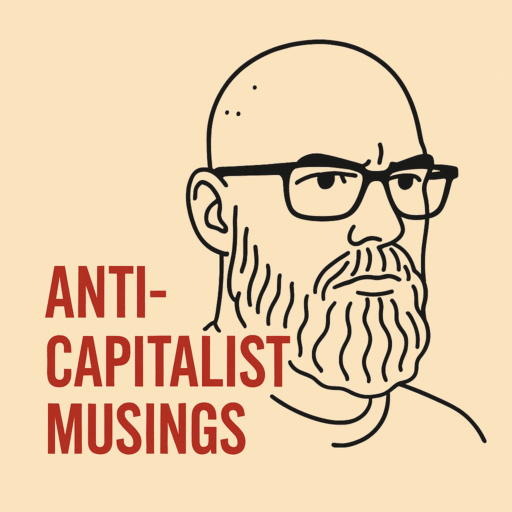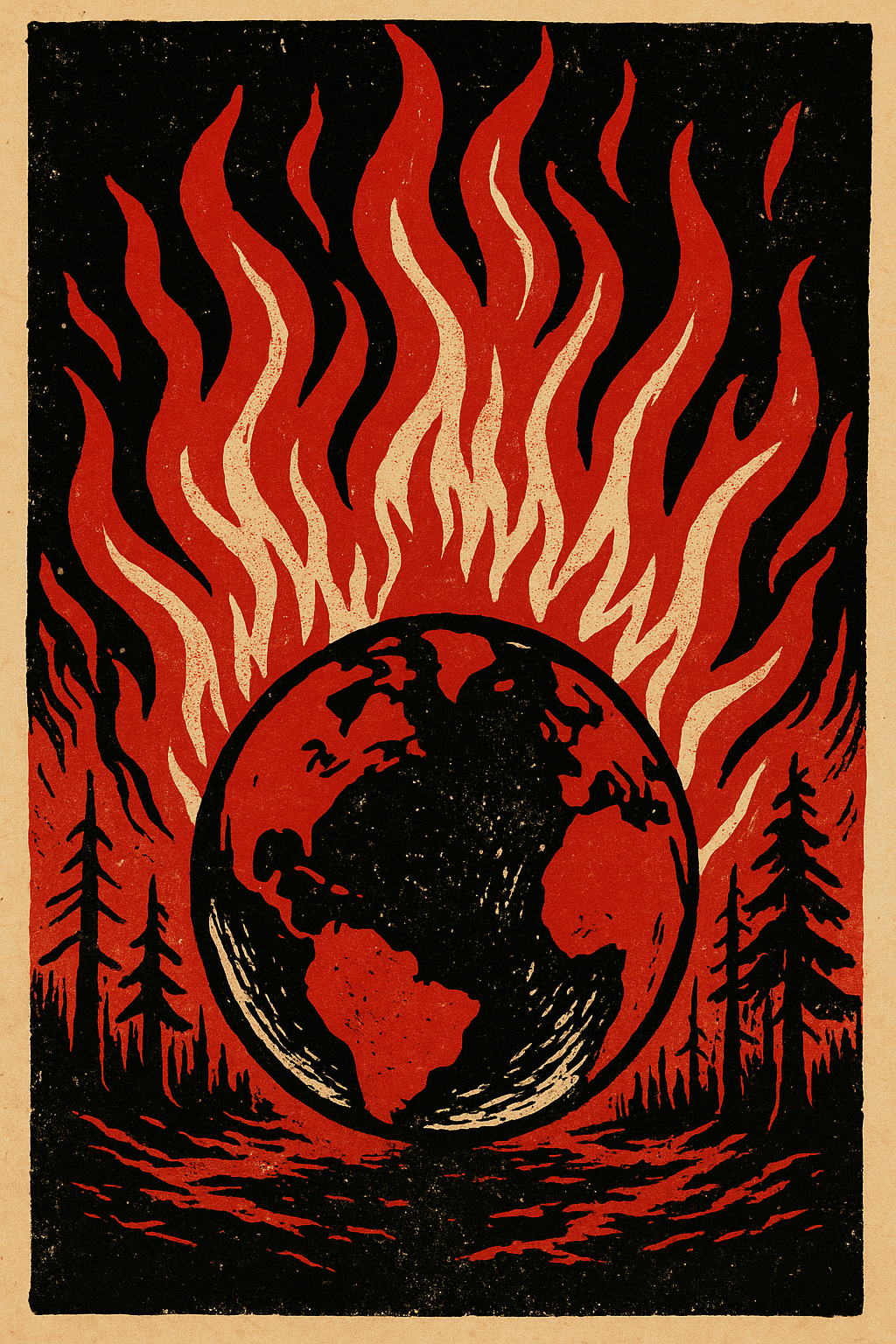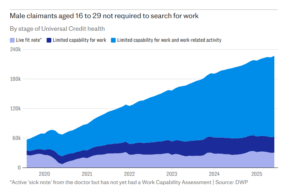There are facts, and then there is power.
June 2025 was the third-hottest June on record, according to Berkeley Earth. The global average temperature anomaly was +1.31°C above pre-industrial levels, with land temperatures +1.65°C, and oceans +0.99°C. Nine countries set new national heat records. Western Europe endured its hottest June ever, with the Copernicus dataset reporting an average of 20.49°C, a staggering +2.81°C above the 1991–2020 average.
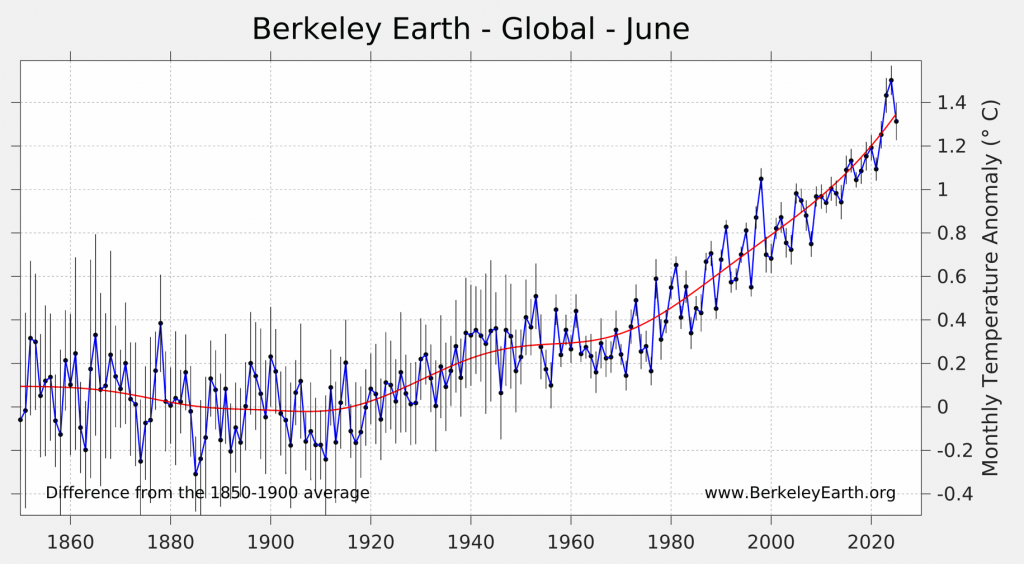
But don’t expect that to change anything. The line keeps going up. So does the rhetoric of delay.
This is the dialectic of our age: we live in a world that is heating rapidly and acting slowly, a world that produces overwhelming evidence but refuses meaningful consequence. Climate denial has not been defeated. It has been transfigured. The new denialism doesn’t say the planet isn’t burning; it says we can live with the fire.
I. The Structure Produces the Fire
The climate crisis isn’t simply a problem of emissions. It is the result of a mode of production: a system built on extracting value, burning carbon, and treating the natural world as both fuel and waste-bin. Every degree is not just a scientific measurement. It is a historical indictment.
The fossil economy didn’t arise by accident. It was designed, defended, subsidised, and globalised. Colonialism paved the roads; neoliberalism removed the brakes. Exxon knew. Shell knew. BP knew. The science was never in doubt. What was in doubt was whether people could be convinced to wait.
And they were.
This is how dialectics helps us: it shows that the crisis isn’t external to capitalism. It is capitalism. It’s what happens when a system premised on infinite growth collides with a planet that has limits. When value is measured in quarterly returns, not liveable futures. When success means setting the world on fire, so long as the inferno is profitable.
II. Cooling the Planet Means Heating the Class Struggle
The June data does more than mark a milestone. It exposes the lie at the heart of every green growth fantasy. We are told: “We’re transitioning.” “The market will solve it.” “Innovation will lead the way.” But this June was the hottest on record for the oceans, despite El Niño having faded.
The Earth is warming because the system responsible is still in charge of the response. Every UN summit is sponsored by oil firms. Every green initiative is wrapped in shareholder logic. Every promise of “net zero” is another opportunity for carbon markets, green bonds, and corporate capture. This isn’t a transition. It’s a hostage situation.
Look at the numbers again:
3.3% of the Earth’s surface broke heat records in June 2025.
1.8% of land and 4.0% of the oceans experienced record-breaking temperatures.
Yet global capital continues to invest in new extraction. The UK issues fresh North Sea licences. The US opens new LNG terminals. The UAE, fresh from hosting COP28, is expanding production.
This is not inertia. It is momentum. The system is working exactly as designed. It is solving for profit, not survival. The only surprise is that people are still surprised.
III. The New Denialism
Once, climate denial was cartoonish. Think tanks paid to cast doubt on the science. Senators bringing snowballs to Congress. Murdoch headlines about “hottest summer since 1976.” Now, it’s more insidious.
The new denialists don’t question the facts. They acknowledge the warming, then offer techno-fixes, border walls, and cooling centres for the rich. They sell “climate resilience” to gated communities while migrants drown at sea. This is climate realism for the ruling class: adaptation as apartheid.
They will tell you: “We can’t afford radical change.” But the truth is the inverse:
We can’t afford capitalism.
Not if we want Junes. Not if we want crops. Not if we want oceans that still produce oxygen.
The Berkeley Earth update shows the 12-month average still hovering around +1.5°C, even as the short-term anomaly dips. This isn’t a reprieve. It’s a holding pattern. The system hasn’t changed course, it’s just catching its breath before the next lurch into chaos. The trendline has stabilised, not because we acted decisively, but because we have normalised the disaster.
IV. The Political Thermometer
The thermometer is not just a scientific instrument. It is a political weapon. It measures what the dominant class would rather ignore. It records not just temperature, but betrayal, each degree a measure of who has been abandoned, displaced, incinerated.
June 2025 should be a turning point. It won’t be. Not unless it is forced. The ruling order will not be shamed into action. It will not be persuaded by charts, nor convinced by conscience. It will continue to burn until we stop it.
That is the final dialectical point: the crisis will deepen until it produces the forces to overcome it. The warming is real. The suffering is immense. But so too is the potential for rupture, if we can find the antagonism, the class force, and the political will to act.
V. The Choice That Isn’t a Choice
Berkeley Earth estimates a 64% chance that 2025 will be the third-warmest year on record. A hot year. Maybe a record one. But within years, it will look tame. The structure demands escalation.
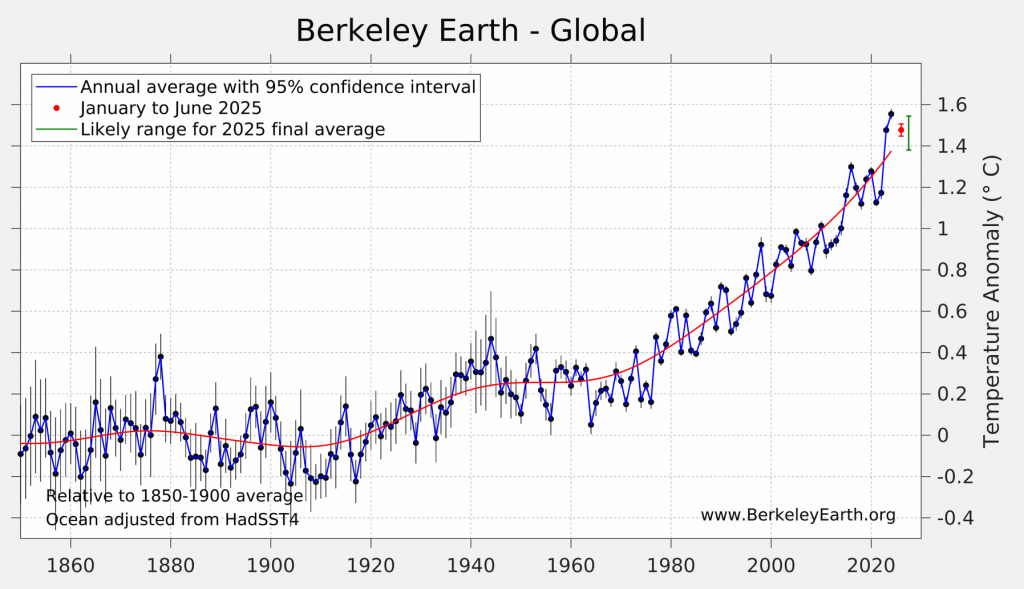
Reform is a fantasy. Green capitalism is a contradiction. The only road that cools the planet is one that redistributes power, dismantles the fossil infrastructure, and ends the logic of endless growth. This will not happen through polite lobbying. It will not come from within. It must be built, below and against.
Because here is the truth the thermometer cannot tell us:
